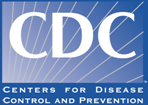CDC Health Disparities & Inequalities Report (CHDIR)
CDC Releases Second Health Disparities & Inequalities Report - United States, 2013
CDC and its partners work to identify and address the factors that lead to health disparities among racial, ethnic, geographic, socioeconomic, and other groups so that barriers to health equity can be removed. The first step in this process is to shine a bright light on the problems to be solved. Providing accurate, useful data on the causes of illness and death in the United States and across the world is a foundation of CDC's mission and work.
The CDC Health Disparities and Inequalities Report - United States, 2013, published in CDC’s Morbidity and Mortality Weekly Report (MMWR), is the second consolidated assessment that highlights health disparities and inequalities across a wide range of diseases, behavioral risk factors, environmental exposures, social determinants, and health-care access by sex, race and ethnicity, income, education, disability status and other social characteristics. It provides new data for 19 of the topics published in 2011 and presents 10 new topics.
 The report provides analysis and reporting of recent trends and ongoing variations in health disparities and inequalities for selected social and health indicators. This is important for encouraging action and facilitating accountability to reduce modifiable disparities by using interventions that are effective and scalable. The report also underscores the need for more consistent data on population characteristics that have often been lacking in health surveys such as disability status and sexual orientation.
The report provides analysis and reporting of recent trends and ongoing variations in health disparities and inequalities for selected social and health indicators. This is important for encouraging action and facilitating accountability to reduce modifiable disparities by using interventions that are effective and scalable. The report also underscores the need for more consistent data on population characteristics that have often been lacking in health surveys such as disability status and sexual orientation.
Disparities Examined
The latest report looks at disparities in deaths and illness, use of health care, behavioral risk factors for disease, environmental hazards, and social determinants of health at the national level. This year’s report contains 10 new topics including activity limitations due to chronic diseases, asthma attacks, fatal and nonfatal work-related injuries and illnesses, health-related quality of life, periodontitis in adults, residential proximity to major highways, tuberculosis, access to healthier foods, and unemployment.
 Report Supports National Disparities Elimination Efforts
Report Supports National Disparities Elimination Efforts
The information provided in the report is of vital importance in achieving the goals of Healthy People 2020 and the National Partnership for Action (NPA) to End Health Disparities. CDC's report also complements the annual National Healthcare Disparities Report and the periodic reports related to Healthy People 2020.
Action to Reduce Disparities
The data presented throughout the report provide a compelling argument for action. Some articles identify promising programs and interventions for reducing the burden of disease or risk factors for a specific health problem.
Reducing disparities requires national leadership to engage a diverse array of stakeholders; facilitate coordination and alignment among federal departments, agencies, offices, and nonfederal partners; champion the implementation of effective policies and programs; and ensure accountability (2).
CDC and its partners can use the findings in this report to raise awareness and understanding of which groups are most vulnerable. The findings also can help motivate increased efforts to intervene at the state, tribal, and local levels to best address health disparities and inequalities.
CDC Health Disparities & Inequalities Report - United States, 2013
Press Release
 Press Release: CDC Report Documents Health Disparities
Press Release: CDC Report Documents Health Disparities
November 21, 2013
More Information
- CDC Health Disparities & Inequalities Report – United States, 2013, Morbidity & Mortality Weekly Report (MMWR) Supplement, November 22, 2013, Vol.62, Supplement No. 3, pg.1-187
- CHDIR 2011 Home Page
- CDC Health Disparities & Inequalities Report – United States, 2011, Morbidity & Mortality Weekly Report (MMWR) Supplement, January 14, 2011, Vol.60, pg.1-116

- CDC's Office of Minority Health & Health Equity (OMHHE)
- CDC's Center for Epidemiology, Surveillance, and Laboratory Services (CSELS)
- CDC Disability and Health, Health Care Data & Statistics
- Healthy People 2020
- HHS National Partnership for Action (NPA)
- AHRQ National Healthcare Disparities Report
- Page last reviewed: November 26, 2013
- Page last updated: September 10, 2015
- Content source:


 ShareCompartir
ShareCompartir

